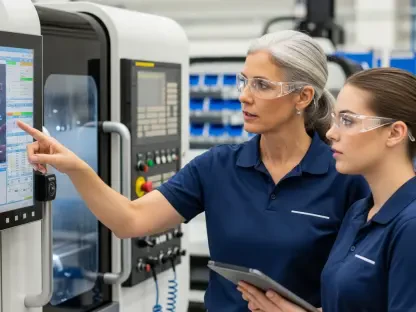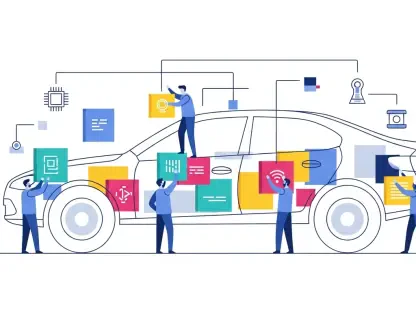In a groundbreaking move that could reshape urban transportation, two industry giants have joined forces to bring fully autonomous robotaxis to the streets of Europe within the next year, targeting key markets in the UK and Germany by 2026. This strategic partnership between a prominent ride-hailing company and a Chinese technology leader aims to introduce cutting-edge self-driving technology. With cities becoming increasingly congested and the demand for sustainable mobility solutions on the rise, this collaboration promises to address pressing challenges by leveraging advanced innovation and operational expertise. The initiative not only marks a significant milestone in the global push toward autonomous vehicles but also highlights the complexities of integrating such technology into diverse urban landscapes. As this ambitious project unfolds, it brings with it a mix of optimism for safer, greener transport and caution over regulatory and societal hurdles that must be navigated with care.
Pioneering Autonomous Mobility in Europe
The alliance between these two companies focuses on deploying a purpose-built autonomous vehicle designed for passenger comfort and efficiency. Known as the Apollo Go RT6, this vehicle represents the pinnacle of self-driving technology, featuring a spacious interior and even the option to remove the steering wheel entirely. The goal is to revolutionize how people move through bustling cities like London and Berlin, offering a seamless blend of innovation and practicality. With the Chinese tech firm’s extensive experience—having already completed millions of autonomous rides in its home market—there’s a strong foundation of expertise to draw upon. This track record provides confidence that the technology can adapt to new environments, potentially transforming urban mobility by reducing reliance on traditional human-driven vehicles and paving the way for a future where autonomous transport is the norm.
Beyond the vehicle itself, the partnership aims to create a hybrid network that integrates self-driving robotaxis with existing ride-hailing services. This approach ensures flexibility for customers, allowing them to choose between autonomous and human-driven options based on preference or availability. By combining the operational strengths of a well-established ride-hailing platform with cutting-edge autonomous systems, the collaboration seeks to deliver a user experience that prioritizes safety, efficiency, and accessibility. Statements from company leaders emphasize a shared vision of making transportation not just smarter but also more sustainable, addressing environmental concerns through reduced emissions. However, the success of this hybrid model will depend on how well it can be tailored to meet the unique demands of European cities, where infrastructure and traffic patterns differ significantly from testing grounds in China.
Navigating Regulatory and Public Challenges
One of the most critical aspects of this initiative is securing regulatory approval in the UK and Germany, where authorities are known for their cautious approach to emerging technologies. While the technology behind these robotaxis is proven and funding is in place, gaining the green light from local governments remains a formidable hurdle. Urban environments like London and Berlin present complex challenges, with dense traffic, intricate road layouts, and strict safety standards that must be met. Additionally, the companies must work closely with regulators to ensure that deployment is thoughtful and benefits local communities, a commitment highlighted by both organizations. The timeline of reaching operational status by 2026 is ambitious, and any delays in policy approvals could push back this target, raising questions about the feasibility of such a rapid rollout in highly regulated markets.
Public acceptance poses another significant barrier to the widespread adoption of autonomous robotaxis. While the technology promises enhanced safety and efficiency, skepticism from the public, alongside potential pushback from safety advocacy groups and traditional taxi unions, could slow progress. Many residents in European cities may harbor concerns about the reliability of self-driving vehicles, especially in unpredictable urban settings. To address these issues, the companies are prioritizing transparency and community engagement, aiming to build trust through education and demonstration of the technology’s capabilities. The acquisition of a popular European ride-hailing service by the American partner also serves as a strategic move to leverage existing local networks and relationships with authorities, potentially easing the path toward acceptance and smoother integration into daily life.
Strategic Moves and Future Implications
A key element of this partnership’s strategy is the recent acquisition of a well-known European mobility platform, which provides a foothold in the region’s competitive ride-hailing market. This move not only strengthens the operational base for launching robotaxis but also offers valuable insights into local consumer behavior and regulatory landscapes. By tapping into established networks, the collaboration can better navigate the cultural and logistical nuances of the UK and Germany, ensuring that the rollout aligns with community needs. This acquisition underscores a broader vision of blending global innovation with localized expertise, a balance that could determine the long-term success of autonomous vehicles in Europe. The emphasis on strategic integration highlights how critical preparation is when introducing disruptive technology to new markets.
Looking ahead, the implications of this partnership extend far beyond immediate deployment. If successful, it could set a precedent for how autonomous technology is adopted worldwide, influencing policies, consumer attitudes, and industry standards. The focus on safety and sustainability aligns with global trends toward greener transportation, potentially reducing urban congestion and carbon footprints over time. However, the journey to 2026 will serve as a litmus test for whether such ambitious projects can overcome entrenched challenges. The lessons learned from navigating complex urban environments and regulatory frameworks will likely inform future initiatives, shaping the trajectory of autonomous mobility for years to come. This collaboration stands as a bold step toward redefining transportation, with its outcomes poised to ripple across the industry.
Reflecting on a Bold Vision for Mobility
Looking back, the collaboration between these two industry leaders to introduce autonomous robotaxis in Europe emerged as a daring endeavor filled with potential. It combined technological innovation with strategic foresight, aiming to transform how people navigated cities through safer and more sustainable means. The challenges of regulatory approval and public trust loomed large, yet the commitment to working with local communities and authorities demonstrated a thoughtful approach. As the project unfolded, it became clear that success hinged on balancing cutting-edge advancements with practical realities. Moving forward, stakeholders can focus on building stronger public awareness campaigns and fostering dialogue with regulators to address lingering concerns. Additionally, investing in pilot programs to showcase the technology’s reliability could pave the way for broader acceptance. This pioneering effort laid critical groundwork, offering a blueprint for future innovations in urban mobility that others might follow.









